Uniqueness of unicorns
Mythical creature has been immortalised by modern films and medieval artwork
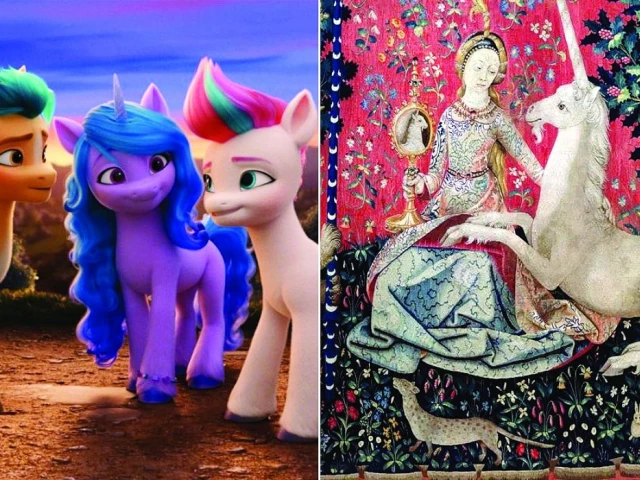
Death of a Unicorn, directed by Alex Scharfman and starring Jenna Ortega and Paul Rudd, features something you don't hear about every day: Killer unicorns.
As per DW, the film, which released in the United States on March 28, is a story about human greed, poking fun at the ultra wealthy in the context of humans hunting down unicorns they discover on a remote ranch in Canada. The creatures are said to have magical healing properties. As the chase begins, gory chaos ensues.
From medieval tapestries to sculptures by Salvador Dali, the film is the latest cultural product to harness the centuries-old symbolism of the mythical one-horned creature.
Sage-like origins
Ancient depictions of the mythical creature date back to the Bronze Age. A bovine animal with one long horn was commonly featured on seals used by the Indus Valley civilisation starting around 2600 BC.
Some historians have suggested that the seal might have been influenced by Rishyasringa, a sage in Hindu and Buddhist mythology who is described as having deer horns and is associated with fertility.
The Greek historian Ctesias, who lived during the 5th century BC, described a single-horned "Monokeros" - an animal he said was found in India, and was similar in size to a horse with a white body, purple head and blue eyes.
It was said that anyone who drank from its horn would be cured from epilepsy or poison. Scholars have since decided Ctesias was probably referring to a rhinoceros.
A magical creature
Legends from around the world tell of the unicorn's magical powers, including purifying water with its horn. This has led to the beast being associated with immortality.
Rumours of the unicorn's healing properties proved to be so compelling that during the Renaissance, its mythical horn was highly sought after by rulers around the world who were willing to pay a hefty sum for one.
But these were likely tusks from a narwhal, or toothed whale, passing as a unicorn horn. Even the English Queen Elizabeth I, who ruled from 1533 to 1603, was gifted an elaborately decorated tusk from an explorer in her court.
Similar to the myth that eating ground pearls could cure illness, "unicorn horns" could supposedly bring water to boil or detoxify a drink if dipped into a cup, which was useful in preventing any attempts at poisoning. Kings and queens thereby drank from goblets lined with "unicorn horn."
It wasn't until the 16th century that Ambroise Pare, a leading medical authority at the time, questioned the properties attributed to the unicorn horn in his Discourse on the Mummy and the Unicorn (1582). Notably didn't refute the idea that unicorns exist in the first place. By the 17th century, the cat was out of the bag that these precious unicorn horns were in fact narwhal tusks.
Immortalised in art
Among the most iconic unicorn-bearing artworks are the seven Unicorn Tapestries (1495-1505) currently on view at The Met Cloisters in New York City.
The luxuriously woven works depict scenes associated with a hunt for an elusive unicorn. On them, we see a group of hunters chasing the animal, appearing to kill it before it then reappears unharmed and chained to a tree.
Art historians have posited that the red marks on the chained unicorn do not represent blood, but rather pomegranate juice dripping from the tree above; pomegranate being a symbol of marriage and fertility.
The unicorn was also associated with themes of Christianity in artwork throughout the ages.
Around 1500, another seminal work of the western art cannon was woven: The Lady and the Unicorn tapestries. The six tapestries feature a royally dressed woman surrounded by various animals, with one creature prominently displayed among all: a regal unicorn.
Each of the five depicts a sense - touch, taste, hearing, smell and sight - while the sixth is the most mysterious. It is accompanied by the words "À mon seul désir" (To my only desire), and has inspired a number of theories. Is the woman renouncing earthly pleasures?
These works are currently on display in the Cluny Museum in Paris and will travel to the Barberini Museum in Potsdam for a unicorn-themed exhibition in October 2025.
Symbol of love
Later in art history, Spanish surrealist artist Salvador Dali used the symbolism of the unicorn to represent love. In the 1977 sculpture The Unicorn, he features the creature boring a heart-shaped hole in a wall with a figure of a woman on the ground. He said it symbolised his love for this wife Gala and wrote in his autobiography that he envisioned her riding the creature.
Contemporary artists such as England's Damien Hirst and Rebecca Horn, who was a German visual artist, also prominently featured unicorns in their works.
American 1990s kids will remember the colourful rainbow unicorn found on Lisa Frank brand school supplies. The hit animated TV series, My Little Pony: Friendship Is Magic (2010-2019), a makeover of the 1980s My Little Pony franchise, also contributed to the revival of unicorns.
Whether hunted in richly woven tapestries of the Middle Ages or starring in films like Death of a Unicorn, the allure of this mythical beast is unlikely to fade anytime soon.



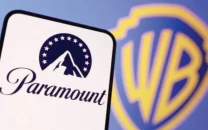

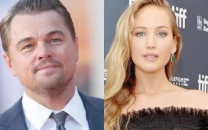

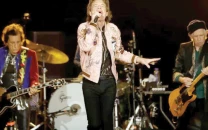


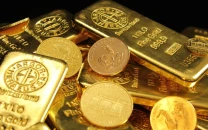









COMMENTS
Comments are moderated and generally will be posted if they are on-topic and not abusive.
For more information, please see our Comments FAQ